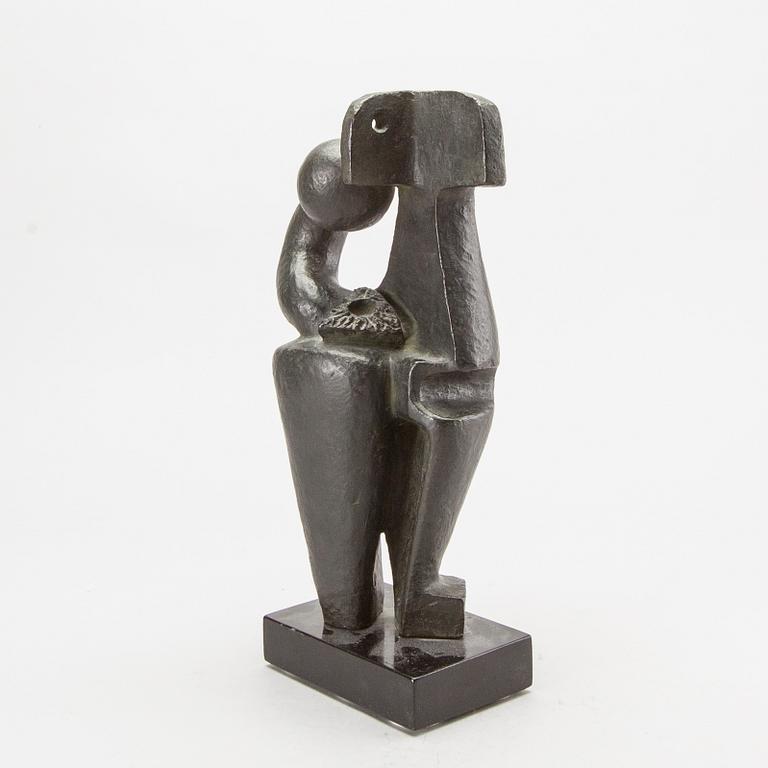Eric Grate
"Duo/Dido and Aeneas"
Signed EG. The motif conceived 1929. Foundry mark H. Bergman Cire Perdue. Bronze, dark patina. Height 29.5 c, (including wood base 32.5 cm).
Exhibitions
Lunds Konsthall, Sweden, "Eric Grate måleri och skulptur", 27 August - 18 September 1960, compare catalogue no 9.
Kunstnernes hus, Oslo, Norway, "Eric Grate", 7 May - 29 May 1960, catalogue 225, compare catalogue no 9.
Norrköpings museum, Sweden, 24 September - 19 October 1960, compare catalogue no 14 (in stone).
Musée National D'Art Moderne, France, "Eric Grate Sculpteur Suédois", 22 March - 15 April 1963, compare catalogue no 8 (in stone).
The Royal Academy of Fine Arts, Sweden, March 1965, compare catalogue no 3 (in stone).
Liljevalchs konsthall, Sweden, "Eric Grate sex decennier 1916-1976", 13 May - 1 August 1978, com pare catalogue no 136 (in stone).
Literature
Ed. Ragnar von Holten and others, "En bok om Eric Grate", 1963, the motif described at p. 67 and compare il at p. 66 and p. 67 (another copy in stone).
Eric Grate and Ragnar von Holten, "Eric Grate", SAK, 1978, the motif described at p. 46-47 and compare ill. at p. 46 (another copy in terracotta).
Ragnar von Holten, "Eric Grate Skulptur", 1990, compare ill at p. 6.
Artist
Eric Grates idiosyncratic world of images always invites exploration and wandering within the imagination. While he respects the the earths natural forms, he sometimes "plays with god", manipulating and playing with nature to create new surprising objects which we recognise but simultaneously dont recall. He borrows fragments from nature and uses his endless imagination to create art in his unique way. His visual language emualtes an aura of abstract surrealism derived from "object trouvés". Grate was inspired by natures radiance and its different forms. Stones, roots, insects, bones, all were transformed into sculptures, particularly the insect world was a source of great inspiration for Grates. During the 1960s, beach, hull, and bones were particularly the starting points for his sculptures. He created numerous official artworks.
Grate began his academic trips after finishing his studies at Royal Swedish Academy of Fine Arts from 1979-20, where he travelled to Italy and Greece, filling his sketchbooks with studies of insects, plants, unique architecture, sculpture, and ceramics. He spent a longer period between 1924 and 1933 in Paris, a formative period where he was one of the few Swedish artists who was associated with the avante garde; we got in contact with none other than the surrealists Jean Arp, Paul Eluard, and Tristan Tzara. Grate is seen by many as one of Sweden's most influential sculptors during the 1900s.
Read more









































































